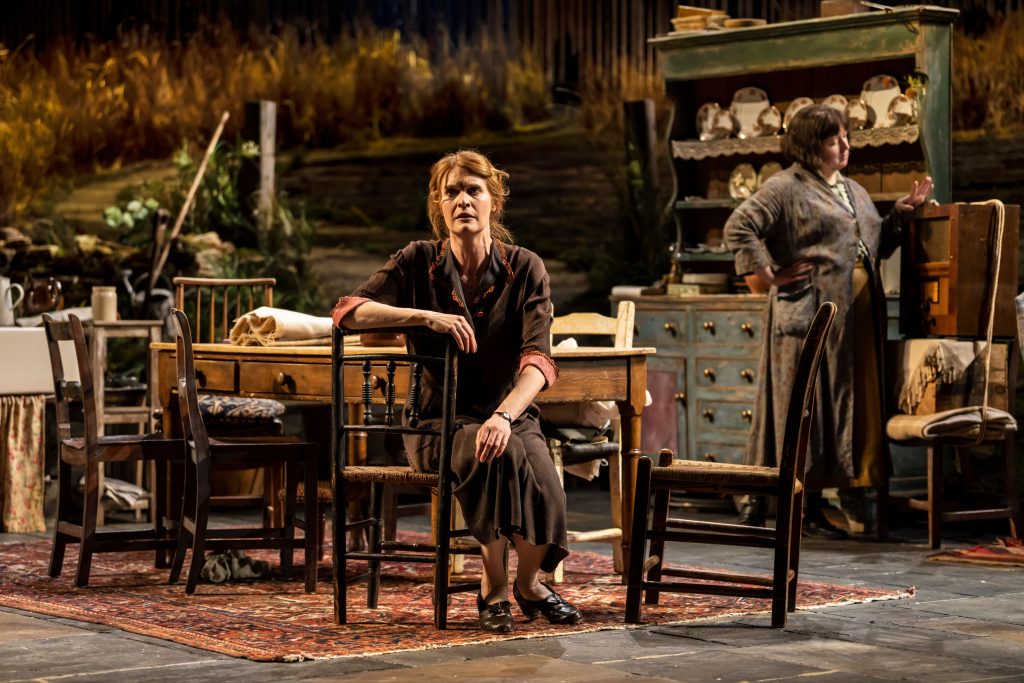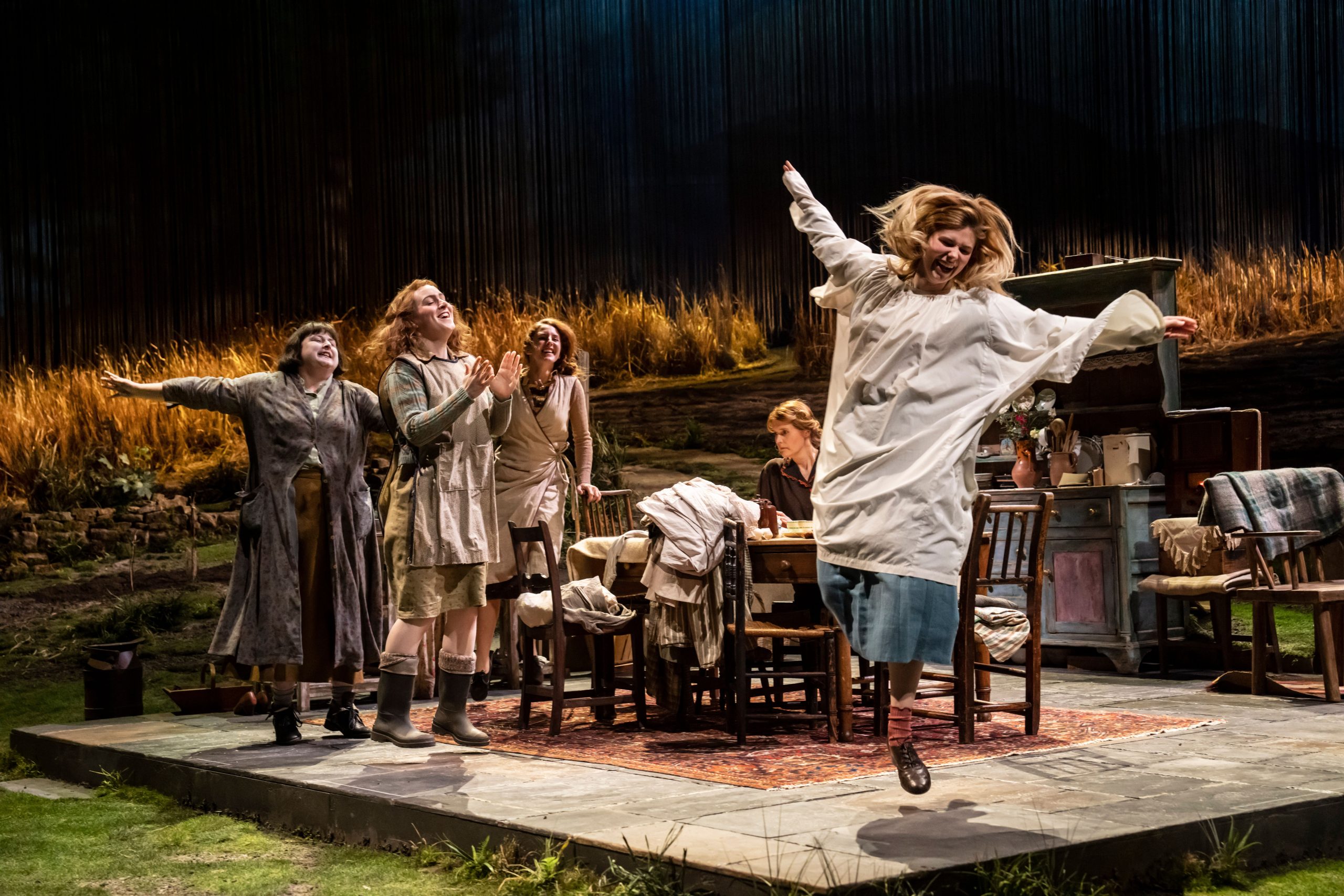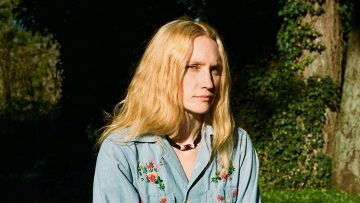★★★★★
If Dancing at Lughnasa is a play about memory – and Josie Rourke’s staging would suggest that it is – it’s a memory of a way of life few, if any, who see it will share. With the death of playwright Brian Friel in 2015, the evocation of rural Irish life in 1936 is no longer a longing portrait of the simpler times we’ve lost; it’s a scene precious few were around to remember in the first place.
When the play premiered in 1990, of course, for much of the audience, the same was true. But in the thirty-odd years since the world has changed almost beyond comprehension, life on a functionally pre-industrial farm has turned from the world our parents and grandparents nurtured to something of whimsical fantasy. Ireland, in particular, has suffered from the patronising reinterpretation that results in films like 2020’s Wild Mountain Thyme, as memory runs out and rose-tinted imagination fills in the gaps.
This situation would fuel Dancing at Lughnasa with extra poignancy in even the most basic revivals. As it is, occupying the National’s Olivier Theatre and making full use of the stage’s grand space and budget, this latest interpretation pulls out all the stops to glorious effect. The result is almost achingly beautiful, dripping with melancholy, and wonderfully, joyously funny.

Justine Mitchell plays austere school teacher Kate (photo: Johan Persson)
The latter should hardly come as a surprise. The casting of beloved sitcom stars Siobhán McSweeney and Ardal O’Hanlon is certainly one of the production’s big draws. But though both are as riotous as you’d expect, they blend seamlessly into a cast in which no one emerges as a scene-stealer. More than a troupe of actors, the five central sisters form something like a living organism, bouncing off each other with the ease of a group joined at the hip since before they could walk. Father Ted and Derry Girls stars show impressive acting chops, too: O’Hanlon’s Father Jack, in particular, disrupts the house’s familiarity with an impeccable portrait of a man out of place and out of time.
All this is to say nothing of the production design, which would almost be worth the price of admission alone if the cast decided to take the night off. The Olivier Theatre is ample space for such a small drama, so the tiny kitchen setting is surrounded by winding paths and golden wheat. When the scene is first set, and the hanging fronds over the stage become the backdrop to a projection of a clear blue sky, the result is nothing short of transportive.
READ MORE: The Lehman Trilogy review | An undeniably intimate epic
Dancing at Lughnasa is one of those plays in which nothing happens, and everything changes. If the extravagant set design, exceptional performances and even the size of the platform they’ve been given add up to one thing, they make a story of ‘five brave Glenties women’ in a cottage feel like the most important thing in the world. Spend a couple of hours in their company, and you’ll think they’re right.
Dancing at Lughnasa plays at the National Theatre until 27 May





